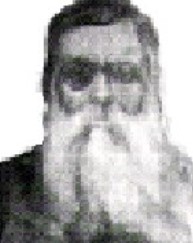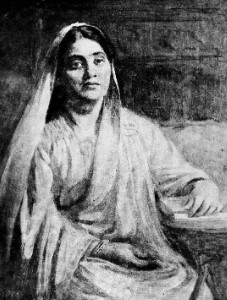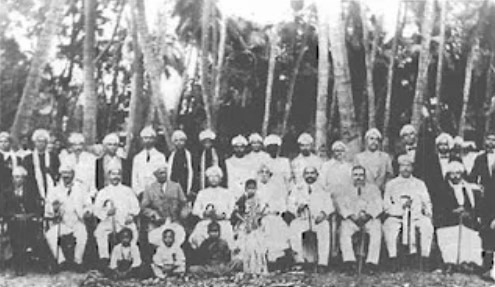Chittaranjan Das Age, Death, Wife, Family, Biography
Quick Info→
Age: 55 Years
Death Date: 06/06/1925
Death Cause: High Fever
Some Lesser Known Facts About Chittaranjan Das
- His family belonged to the Brahmo Samaj.
- His father, who was a noted Indian lawyer, edited an English weekly called The Brahmo Public Opinion.
- Chittaranjan Das was the political mentor of Indian freedom fighter Netaji Subhas Chandra Bose.
- He founded and led the Swaraj Party in Bengal during British rule in India.
- In London, Chittaranjan Das became friends with Sri Aurobindo Ghosh, Atul Prasad Sen, and Sarojini Naidu. Together, they campaigned for Dadabhai Naoroji to win a seat in the House of Commons from Central Finsbury.
- In 1894, he left his law practice to join the non-cooperation movement against the British colonial government.
- In 1909, Chittaranjan Das restarted his law practice and defended Aurobindo Ghosh in the Alipore bomb case. Later, Sri Aurobindo, in his Uttarpara speech, mentioned that Das sacrificed his health to save him.
- Chittaranjan Das was actively involved in the activities of the Anushilan Samiti movement.
- When Pramatha Mitter organized the Samiti as its president, Das became his associate.
- The Anushilan Samiti was supported by Pramatha Mitter, Chittaranjan Das, Haridas Bose, Suren Haldar, and Manabendra Nath Roy.
- In 1913, he published a book titled “Sagar Sangeet” (The Songs of the Sea).
- He was politically active from 1917 to 1925.
- In 1917, he led the Bengal Provincial Conference and proposed a plan for village reconstruction. It included establishing local self-government, cooperative credit societies, and cottage industries.
- Chittaranjan Das opposed the Montagu-Chelmsford Reform, which introduced a diarchy in India.
- He was elected as the president of the Ahmedabad Congress in 1921.
- Chittaranjan Das boycotted British-made clothes. He set an example by burning his European clothes and wearing Khadi.
- He published a newspaper called Forward, later renamed Liberty, to support anti-British movements in India.
- Chittaranjan Das was the first mayor of the Calcutta Municipal Corporation when it was formed.
- He believed in non-violence and constitutional methods for achieving national independence.
- He advocated for Hindu-Muslim unity, cooperation, and communal harmony, and supported national education.
- After losing a motion on “No Council Entry” to Mahatma Gandhi’s group, Chittaranjan Das resigned as president of the Indian National Congress at the Gaya session.
- He then founded the Congress-Khilafat Swaraj Party with Narasimha Chintaman Kelkar and Motilal Nehru. Other prominent leaders in the party included Huseyn Shaheed Suhrawardy, Netaji Subhas Chandra Bose, and Vithalbhai Patel.
- Chittaranjan Das maintained close contact with Bipin Chandra Pal and Aurobindo Ghosh and helped them to publish Bande Mataram, an English weekly aimed at promoting the ideals of Swaraj.
- In May 1923, at an AICC meeting in Bombay, he gained majority support for his policy of council entry. In this, 96 members voted in favour of him and 71 against.
- Chittaranjan Das became a notable Bengali poet during the National Movement. He published two poetry books titled “Malancha” and “Mala.”
- When Sri Aurobindo asked him for financial support in Pondicherry, Chittaranjan Das gave him one thousand rupees to support the English translation of a poem.
- He was the founder of a monthly journal named “Narayana,” which featured contributions from renowned writers like Sharat Chandra Chattopadhyay, Bipin Chandra Pal, and Hariprasad Shastri.
- In 1925, his health began declining due to overwork. He then went to Darjeeling to recover and stayed at Sir N. N. Sircar’s house, ‘Step Aside,’ in May 1925.
- When he was not well, Mahatma Gandhi visited and stayed with him for a few days. Gandhi mentioned him in a news article. Gandhi wrote,
When I left Darjeeling I left much more that I had ever thought before. There was no end of my affection for Deshbandhu and my warm feeling for such a great soul.
- In 1950, the Chittaranjan Cancer Hospital was founded on the premises of Chittaranjan Seva Sadan in West Bengal.
- A few years before his death, Chittaranjan Das donated this property to the nation for the betterment of women’s lives. It included his house and the surrounding land.
- A main road connecting North Kolkata with Central Kolkata, known as Central Avenue, was renamed Chittaranjan Avenue in his honour.
- A town named ‘Chittaranjan’ in the Paschim Bardhaman district near Asansol, located at the border of Bengal and Jharkhand, is known for the Chittaranjan Locomotive Works.
- Chittaranjan Locomotive Works in West Bengal is the largest locomotive manufacturing unit in the world.
- In 1955, Deshbandhu College for Girls, a women’s college on Rashbehari Avenue in South Kolkata, was established in his honour. It is affiliated with the University of Calcutta.
- In 1965, the Government of India issued a 15 paise postal stamp in his honour.
- In 1967, Chittaranjan College was established in the College Street area in North Kolkata. It is a government college which offers bachelor’s degrees in arts and science.
- EPDP Colony in South Delhi was renamed Chittaranjan Park in the 1980s. A large Bengali community lives here.































